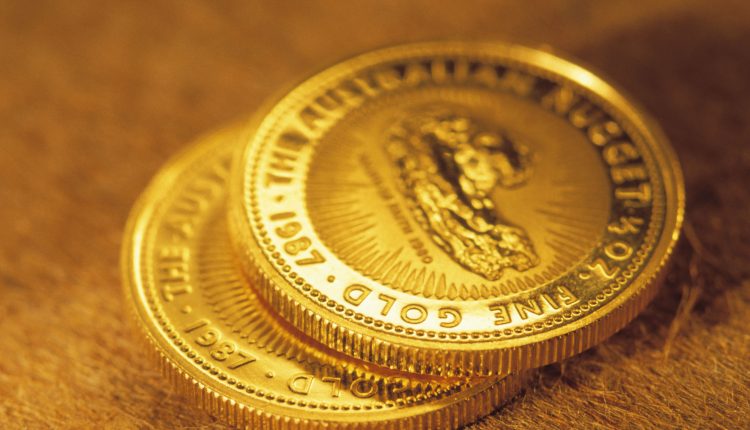How to Evaluate Gold Prices Based on Current Market Trends

Gold rates in India have steadily risen over the last year. While In the year 2022 the yellow metal ended at a rate of ₹55,017/10g, the gold rate in Delhi now stands close to ₹60,000 per 10 grams. Contributing factors like global recession fears, rising inflation rates, stock market volatility, and others have continued into the new year. Thus, going forward, we can expect gold rates to maintain momentum and keep on an upward trajectory.
While gold rates in Delhi and other Indian cities rely on foreign benchmarks, they are also influenced by government policies and currency values. If you’re an investor looking to gauge the price index of the asset, you should know how current market trends influence gold rates in India.
Evaluating Gold Rates On the Basis of Market Trends
Here’s a list of the most important market trends you should review when evaluating gold rates in Delhi and other Indian cities:
Prevailing Interest Rates
Interest rates are inversely proportional to gold rates. In other words, gold prices fall when the interest rate rises, and vice versa. The upward climb of interest rates signals better returns from other investment products.
As a result, investors may sell their gold assets in favour of higher-yielding assets like stocks and bonds. This leads to a fall in demand for gold that’s matched by a corresponding fall in prices. However, when interest rates fall, investors turn to gold as a safe-haven asset, pushing up gold rates.
Inflation Levels
Inflation is symptomatic of excess money supply in the economy, which dilutes the value of the currency in circulation. In such instances, people prefer holding wealth in value-saving assets like gold. Since the value of gold remains stable in the long run, it’s a preferred hedge against inflationary pressures. Thus, when inflation levels rise, gold rate in Delhi and other Indian cities also experience an upward swing.
Global Geopolitical Environment
Apart from current trends in the domestic, those in the international market are equally important when evaluating gold rates in India. Even the slightest global price movements affect Indian gold prices as India meets its gold demand through imports. If imports get costlier, gold rates in Delhi and other Indian cities increase, while gold rates decline if import prices fall.
During times of political or economic uncertainty, gold rates witness an upward climb as investors rush to hedge losses with this ‘crisis commodity’. This rise in demand for gold as a safer investment vehicle puts a premium on gold rates.
Ongoing Exchange Rate
The price of gold imports changes with a change in the Rupee-Dollar exchange rate. The weakening of the Rupee against the Dollar will increase gold import costs. As a result, the gold rates in India will rise. With imports getting costlier, the final selling price of gold also rises. Alternatively, if the value of the Rupee appreciates (US Dollar depreciates), gold prices will fall as import costs will be lowered.
Demand and Supply Balance
Disruptions in the demand and supply balance of the precious yellow metal affect its price. As per the World Gold Council, India’s gold demand for Q3 2022 marked a 14% increase in the year-on-year evaluations. Every year there’s a spike in demand for gold jewellery during the wedding season from October to February.
Similarly, gold demand also rises during the festive season, like Dhanteras and Diwali due to the auspicious value attached to the metal. About 12% of the imported gold is used to meet industry demand. However, supply is limited. Thus, an increase in demand due to any reason spells a rise in gold rates.
Changes in RBI’s Gold Reserves
RBI’s decision to alter its gold reserves has a bearing on gold rate evaluations. If the RBI increases gold purchases, the supply of the commodity in the market declines, leading to an upward price push. However, when the RBI sells its gold reserves, the supply of gold in the market rises, lowering its price.
Budgetary Changes
Since India is the world’s second largest consumer of gold and largely meets its demand through imports, import duties and policies impact prevalent gold rates. Thus, gold rates mirror import duty changes. When the government hikes import duties, gold rates automatically rise, while when duties are lowered, gold rates decline.
Bullish and Bearish Stock Trends
Historically, gold rates have displayed a negative correlation with the equity market. Thus, when the stock performs well, investors seek to exploit these opportunities, lowering both the demand for and prices of gold. However, if market volatility is evident, investors may gravitate towards the value-storing gold assets, raising their prices.
Why Should You Invest In Gold?
With the current market trends pointing to a possible economic slowdown, investing in gold is a safe bet. Gold’s ability to hold value makes it a reliable asset to fight inflationary pulls. If inflation rates rise in the coming months of 2023, assets like stocks and bonds might underperform. The recent budget announcement about capital gains tax waiver on the conversion of gold to e-gold and vice versa also makes digital gold a promising avenue.
Thus, as an Indian investor, a 10%-15% exposure to gold may be a prudent choice to both diversify your holdings and hedge any possible equity losses. Moreover, you can adjust your investment route depending on your risk appetite and time horizon. For instance, investors with short-term goals can opt for gold ETFs, while those with long-term ones can side with gold sovereign bonds.
The Bottom Line
While predicting gold prices based on market trends can be tricky, you can always use these trends as signals to make better investment decisions. It is important to remember that correlations between various trends and gold rates exist, however, there have been instances where these correlations have been challenged. Nonetheless, to be an informed investor, you should carefully assess the prevalent market trends.

Comments are closed.